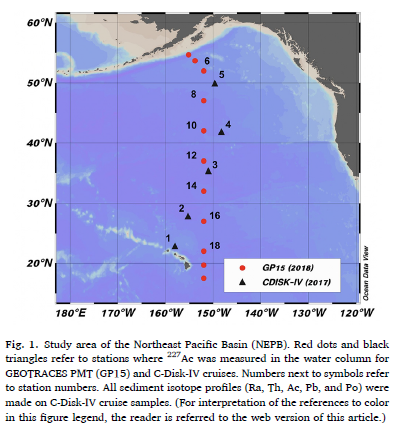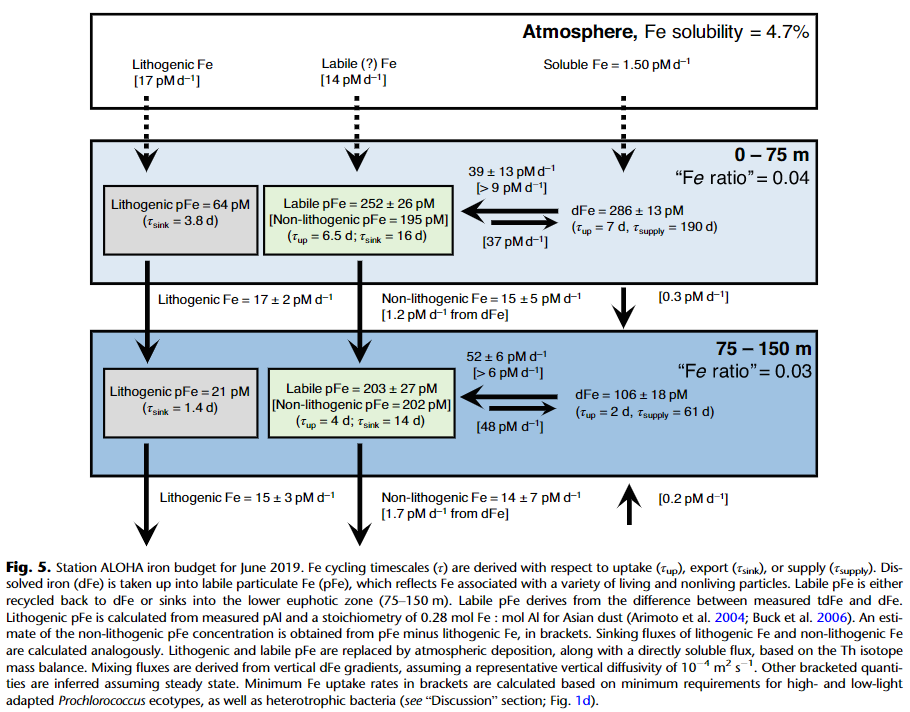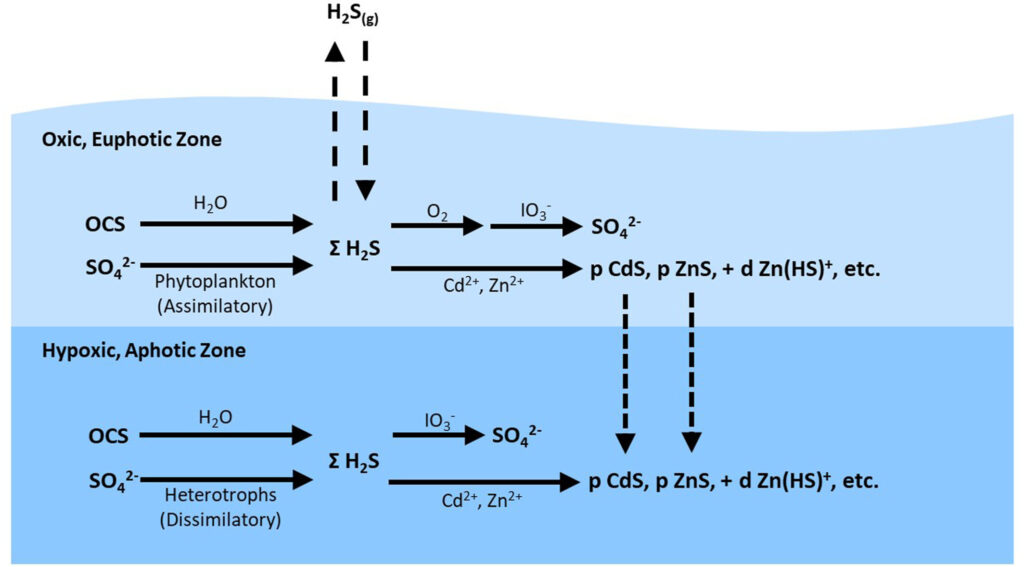March 2024: Joint GEOTRACES research from the Pacific Ocean published by early career scientist Nicole Buckley
The TRACER Lab gets out on Canandaigua Lake Fall 2023
Many thanks to Dr. Pasternack for hosting us!
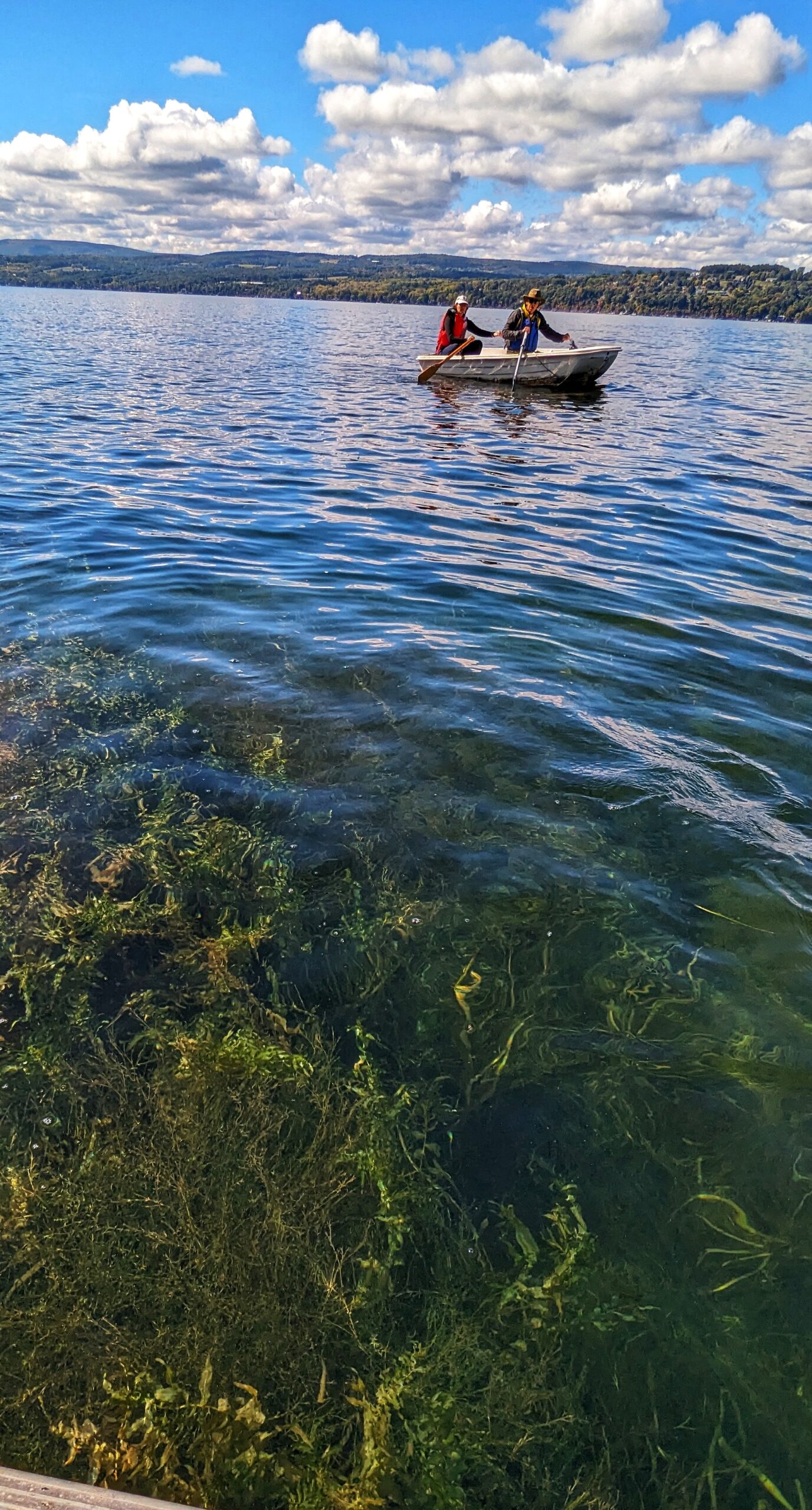
Drs. Berger and Pasternack row to examine a newly vegetated, shallow area of the lake.
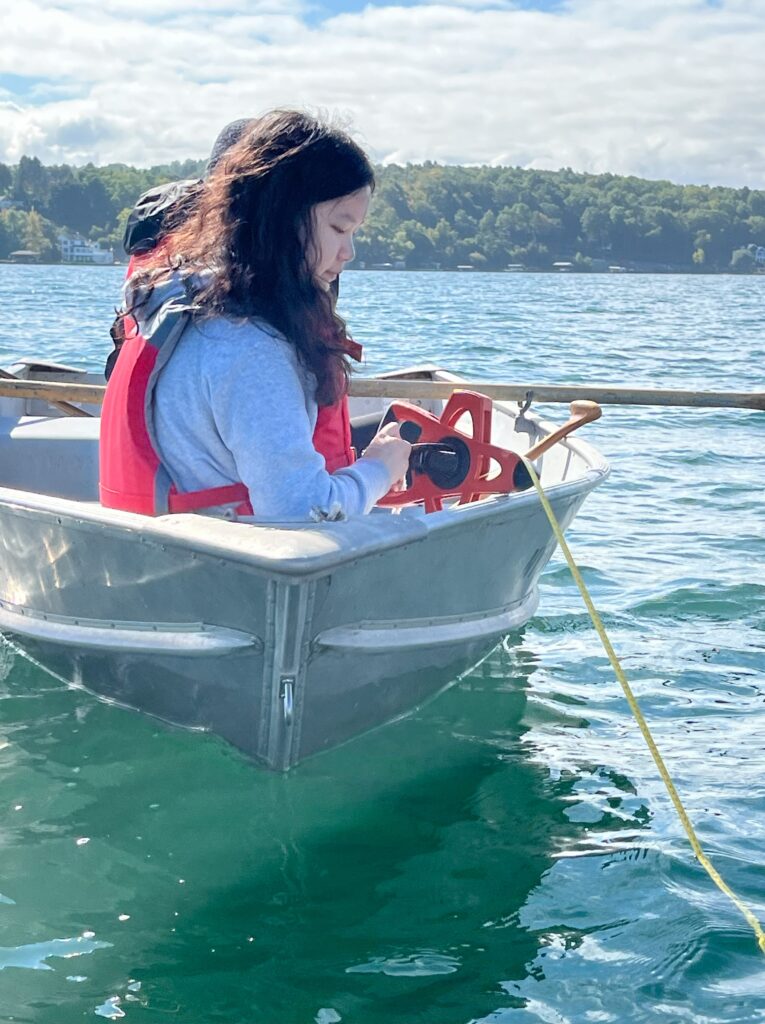
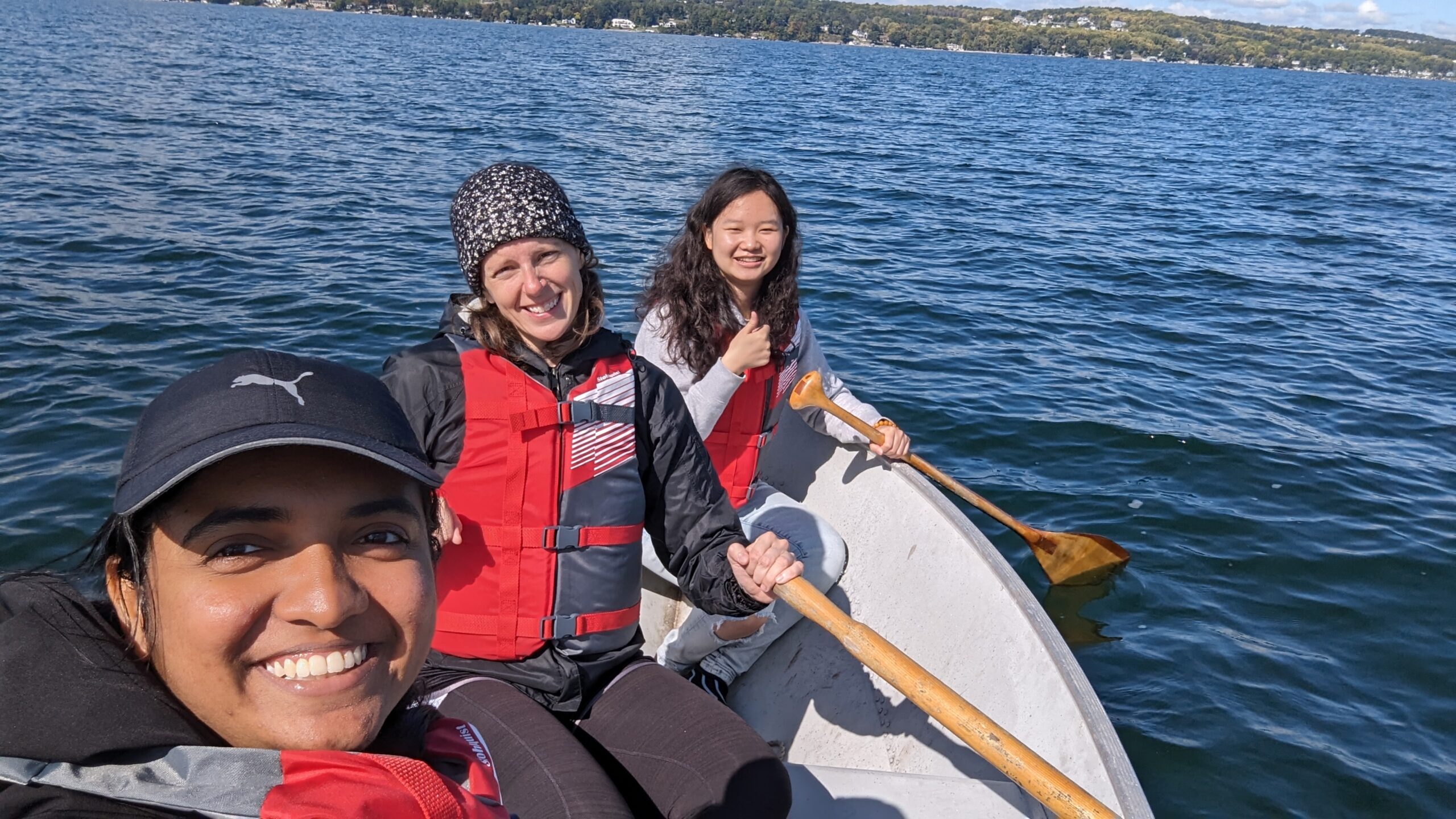
Oct 2023: Black et al. (2023) ‘Insights into constraining coastal carbon export from radioisotopes’ is out in FIMS!
Coastal shelves are important regions for carbon transformation and storage, however, constraining coastal carbon budgets and their uncertainties remains a challenge. Repeated sampling of a semi-restricted coastal basin in Nova Scotia, Canada was performed in 2019 utilizing the 238U-234Th isotope system to estimate carbon flux in both the water column and surface sediments. 234Th fluxes in the Bedford Basin water column appeared to be in relative balance with those arriving at the seafloor averaged over spring and summer. The resulting carbon export estimates averaged ~70 mmol C m-2 d-1 for April through August of 2019 and 234Th-derived annual export estimates (19 mol C m-2 yr-1) were within a factor of three of the model-based estimates for the basin. Incorporating the results from prior research, this study constrains the major carbon sources and sinks in Bedford Basin. While the 238U-234Th method is well-established in the open ocean, its use in coastal shelf regions is still evolving. Pronounced 234Th deficits are unique to coastal zones and continue to raise important questions about the physical and biogeochemical factors that influence tracer distributions and the carbon estimates that are derived from them. Future paths and method refinements for utilizing the 238U-234Th system in coastal regions are put forth here, including the use of size-fractionated sampling, the need for boreal winter estimates, the quantification of horizontal mixing contributions, an analysis of the role of small particles in coastal carbon budgets, and the study of sediment resuspension’s impact on tracer distributions.
Bedford Basin Bathymetry (left) and Th-234 flux with water depth in Bedford Basin (right)

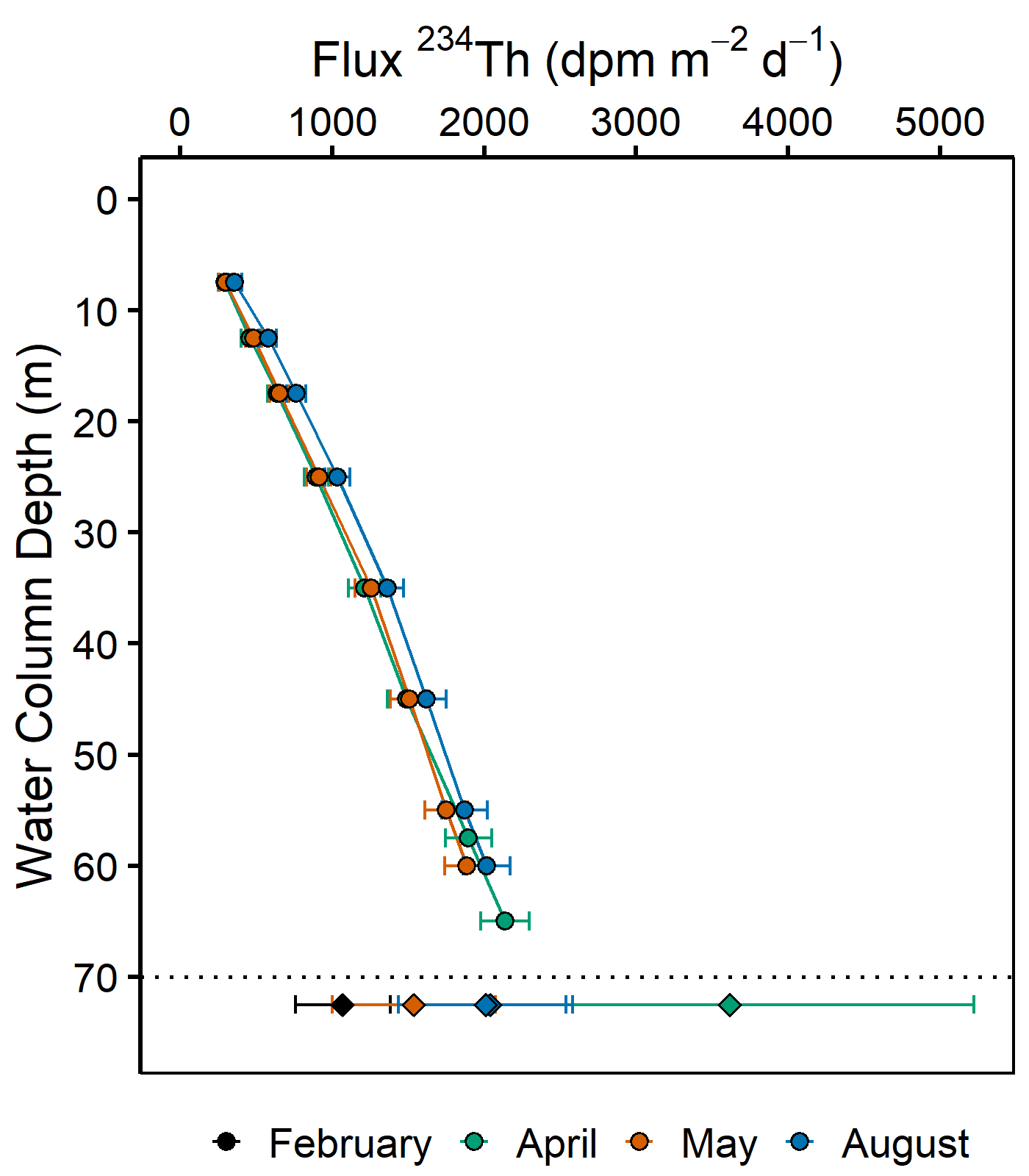
Oct 2022: Joint GEOTRACES research from the North Pacific published by early career scientist Nathan Kemnitz
